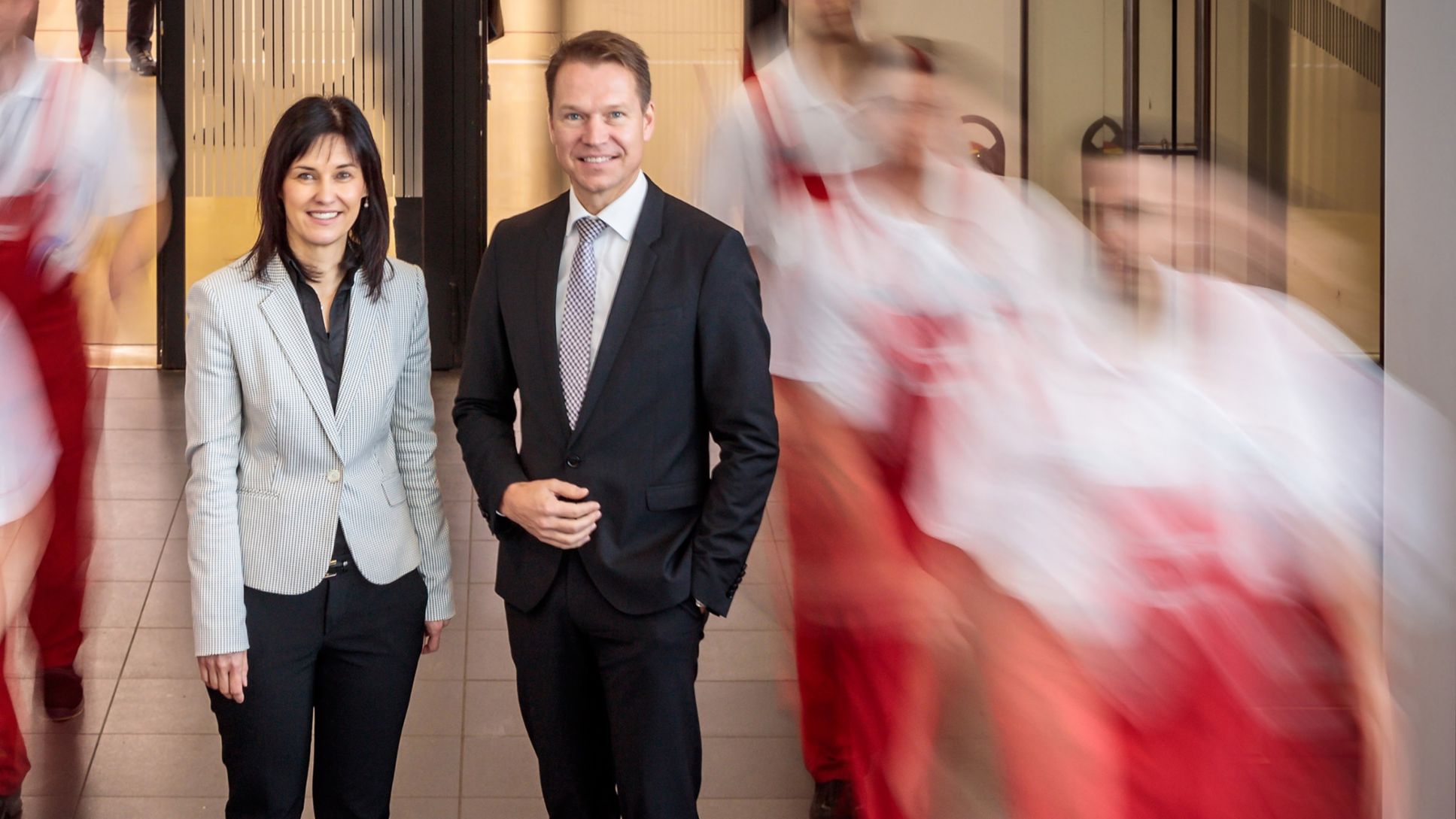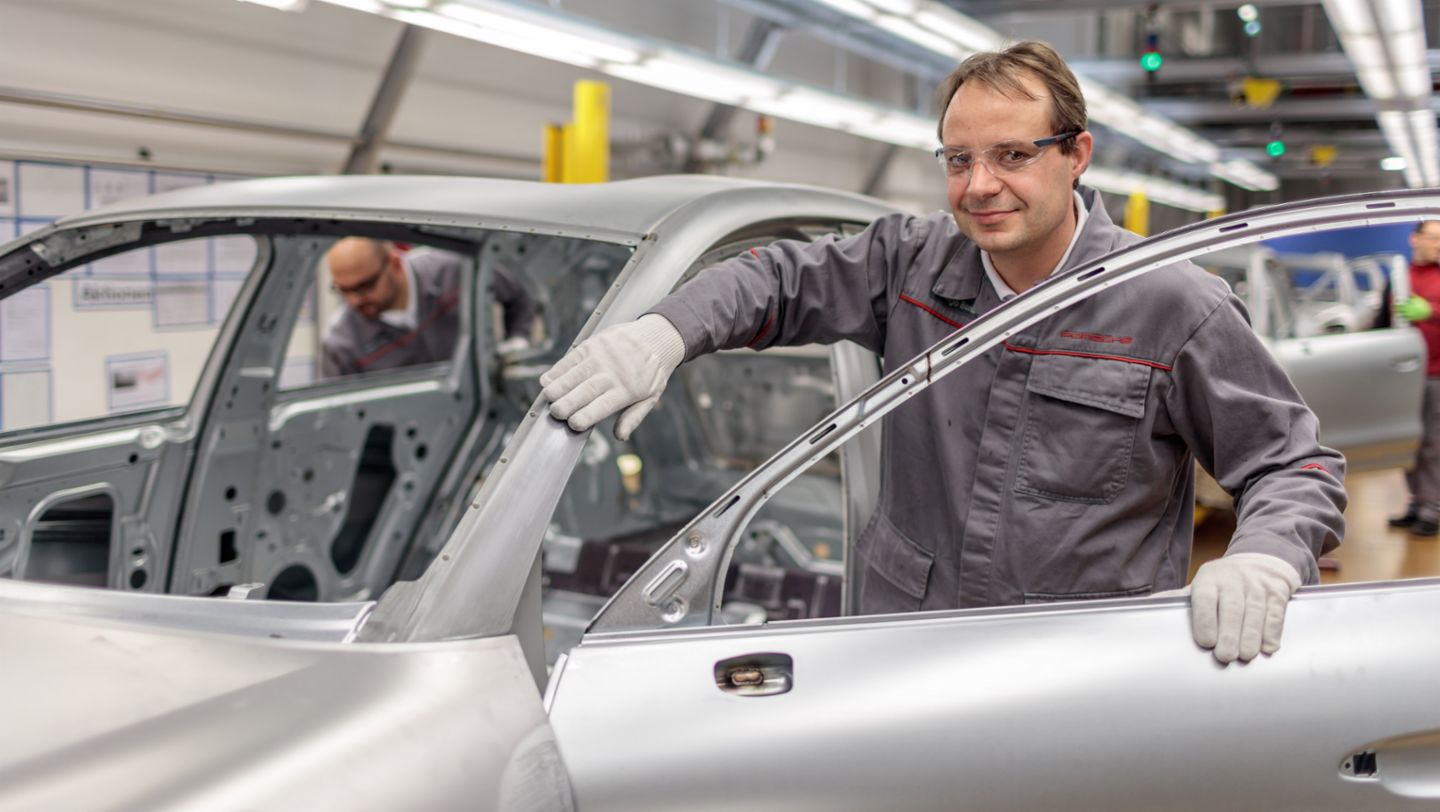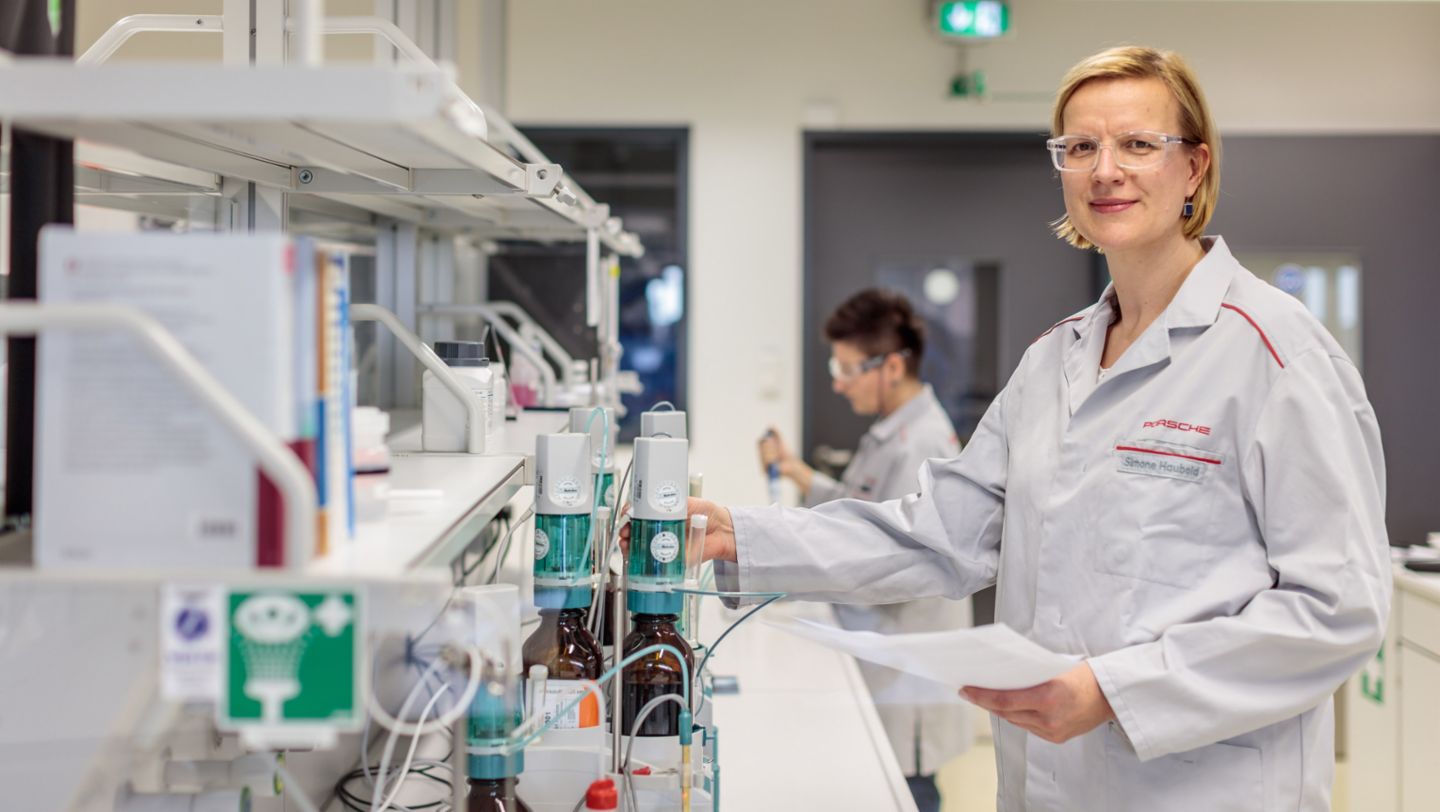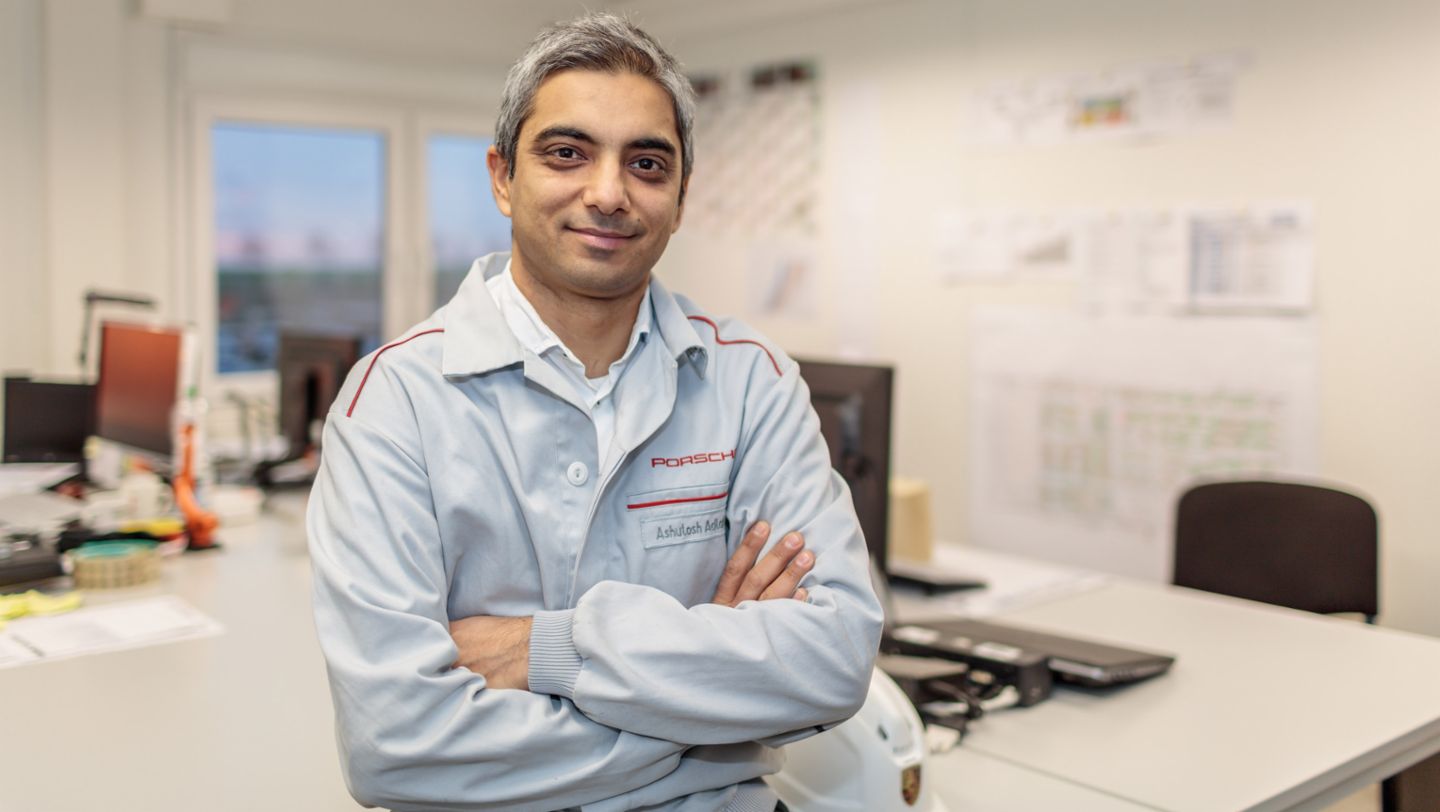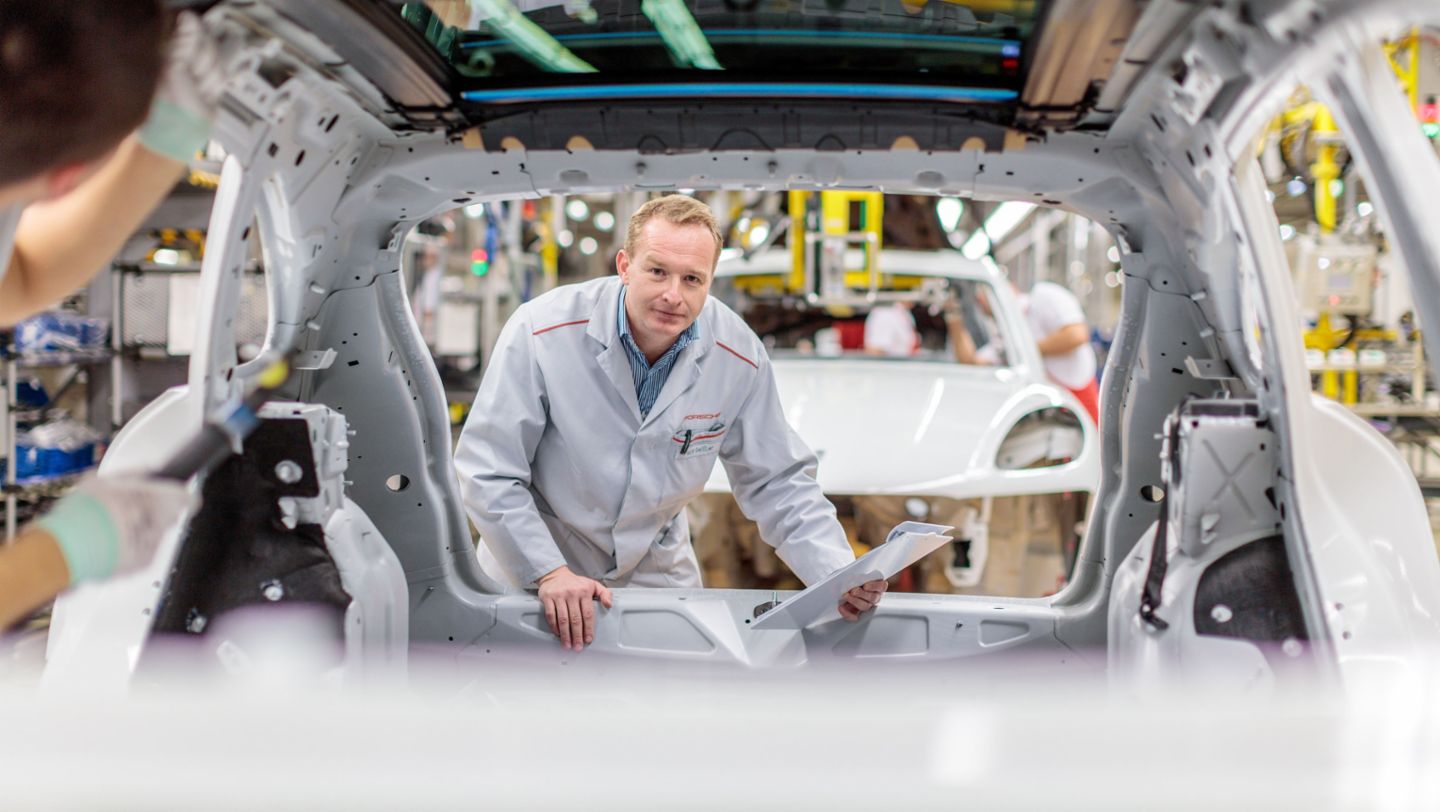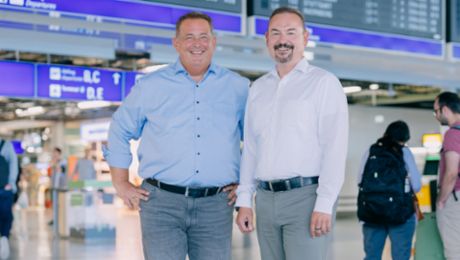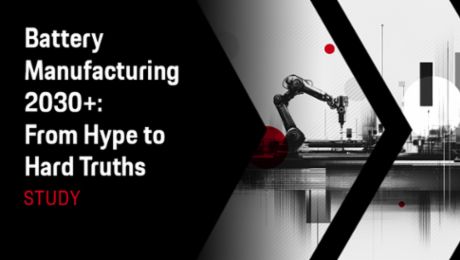Stefan Althoff has a formidable job. As the head of human resources at Porsche Leipzig GmbH, for years he has been organizing the factory’s enormous increase in the number of employees. After starting with just 300 members in the summer of 2002 for the final assembly of the Porsche Cayenne, the workforce will reach the 4,000 mark by 2017. That poses quite a challenge. In order for production to run smoothly, new people have to be hired right on time and on short notice. The HR team has to sift through the flood of applications to find the right skilled personnel, in addition to recruiting specialists from Germany and abroad. But Althoff (48) views this herculean task in positive terms. “There’s nothing more rewarding than managing the increase in personnel at a company that offers such a professional environment,” he says with a smile.
In 1999, Porsche decided to build a new site in Leipzig from the ground up. Although located in the eastern German state of Saxony, which has traditionally been strong in automobile production, the city itself had not yet played an active part in this sector, unlike the neighboring Chemnitz-Zwickau region where Audi was once active and where the East German Trabant was later made. Thousands upon thousands of young people were leaving Leipzig for the western part of Germany, and it had an unemployment rate of 20 percent. But the city had much to offer investors: superb infrastructure including a modern airport, a major nearby freeway interchange and proximity to numerous automotive suppliers, motivated people, and good investment conditions. So it won out against 16 other applicants—and the site has been continuously expanded ever since.
Around 650 cars per day roll from its assembly lines
Porsche has now invested 1.3 billion euros in the Leipzig plant. On an average day with three shifts, around 650 cars roll from its assembly lines—which adds up to 150,000 a year and represents a major part of Porsche’s overall production. In 2009, final assembly of the Panamera was added to the plant. And two years later the company decided to produce the Macan in Leipzig, which meant turning the factory into a full production site and adding a body shop and paint shop. When Macan production started at the end of 2013, some 470 engineers and 1,100 production workers had joined the staff during the preceding two years. To achieve that feat, precision recruitment plans were absolutely essential.
“We left nothing to chance when enlarging the workforce; instead, our approach was entirely strategic,” says Grit Schöbel, who guided the expansion as director of HR management. “Our ‘finish line’ was the start of production. With that as our fixed point, we developed a master plan with a timeline and milestones as well as our own recruitment and qualification methods.”
Consultants from Porsche Consulting support the project
When the decision to build the Macan was made in 2011, Leipzig sought support from Porsche Consulting and formed a ten-member project team. Work started with a strategic analysis: Who do we need when and where? After all, Group-wide qualification programs that skilled workers go through to meet Porsche requirements can last up to two years. Together with the project team and experienced colleagues from Porsche AG, the consultants determined the need for engineers and skilled workers at the body and paint shops and in assembly. Moreover, they analyzed the labor market on the basis of statistical and demographic data.
This yielded 52 qualification profiles for the specific jobs at the expanded Porsche plant—including everything from the “feeders” who keep the nearly 400 industrial robots supplied with the requisite materials to the system operators who do complex machinery control work. Every position was marked on a floor plan of the full Production site, with each marker standing for an individual with a certain job. The HR staff knew the requirements for each job and used them as the basis for drawing up qualification programs for each new employee. What skills does each applicant have? What requirements does he or she need to be trained for? With help from the Porsche consultants, a modular training strategy was developed to meet the needs of each employee.
Applicants get a feel for the site
In order to succeed in adding this new dimension to the site, the HR department restructured itself and created a seven-member team to focus exclusively on recruitment. The new team’s offices were housed in containers right at the construction site—which was also where the job interviews were conducted. “This was in line with the wishes of many applicants who wanted to form a first-hand impression of Porsche and get a feel for the site,” says Schöbel. This targeted search for specialists was a new experience for Porsche. Ten years after the plant started operations in 2002, skilled workers were no longer so easy to find. The unemployment rate in Saxony had dropped to less than ten percent, or half of what it once had been. Moreover, the neighboring BMW plant and Volkswagen in Zwickau were also looking for the same skill sets. “We had to dig deeper into our box of tricks,” says Althoff.
The HR team placed a special focus on people who had left eastern Germany in the 1990s but wished to return to their roots. So Porsche not only launched its personnel marketing campaign on the usual channels and social networks, but also placed ads in Deutsche Bahn rail cars and vacation areas favored by former East Germans—such as Baltic Sea beach resorts in the summer and Ore Mountain ski resorts in the winter. This strategy was successful. A good number of the plant’s employees now come from the former East German states of Saxony, Saxony-Anhalt, and Thuringia, and many of them are “returnees.”
More than 100,000 applications
The job ads elicited a huge amount of interest. More than 100,000 applications were sent to Porsche Leipzig from 2011 to 2015. Headhunters also helped to find management personnel and specialists in less common fields such as vehicle body construction. In addition to technical expertise, the HR team was also looking for interpersonal skills such as a teamoriented approach, as well as a fascination for the subject area. “Our goal is a 100 percent fit,” says Althoff. The applicants need to match Porsche—and the workforce should reflect a balanced mixture of young and old, men and women, and people with German and international backgrounds.
A key element of the selection process consisted of 220 individual “applicant days,” each of which focused on six to ten candidates who had been invited to the site following a phone interview. The candidates performed field-specific technical exercises, gave presentations, and worked on tasks in teams. The days ended with the actual interviews. Following an entire day of getting to know the candidates, it was easy to make decisions. As Schöbel explains, “We departed from traditional hiring practices in order to make the selection process more efficient and accurate, and to have a better basis for comparing the skill levels we were looking for.”
All new Porsche employees start by learning skills
Four training centers were set up to accelerate entry into the new positions, one each for car body construction, the paint shop, logistics, and assembly. At simulated work stations in these areas, all new Porsche employees start by learning both basic and production-specific skills—including the correct use of cordless screw drivers and paint spray guns, how to identify material defects, and what are the most ergonomic postures. This also revealed that in some cases even individuals with the most exotic job profiles, such as a pastry chef, might bring superb physical coordination skills for a job in car production.
Thomas Scheib from Porsche Consulting was charged with developing the qualification strategy. As he describes it, “Given the proximity to the processes themselves—in spatial terms, but also and especially with respect to the actual process steps—the training centers give employees targeted training for their jobs.” The aim is to provide them with a standardized store of knowledge in order to ensure the stability and high quality of series production.
Personnel fluctuation is only slightly over one percent
And the plan worked. In late 2013 the Macan was given one of the best production launches in the history of the Volkswagen Group. “We gathered valuable experience,” says Althoff. “We now know that what’s key is the methodological approach or master plan—just like with an engineering project.” The newly developed tools for recruitment and training are also helping the plant in subsequent stages of growth, for example in hiring around 400 engineers and 540 workers for the next generation of the Panamera.
Today the team is able to select and sign contracts with specialists who are a good match for the company within an average of 40 days. And the personnel fluctuation at Porsche Leipzig is only slightly over one percent. “We put in a huge amount of effort,” says Althoff, “but we are rewarded with satisfied employees.”
Info
Text first published in „Porsche Consulting - THE MAGAZINE", Issue 17
Author: Sven Heitkamp // Photos by Marco Prosch
